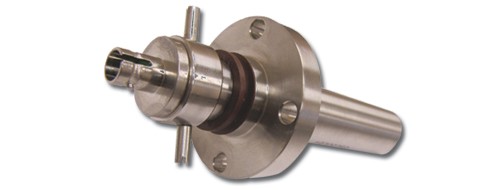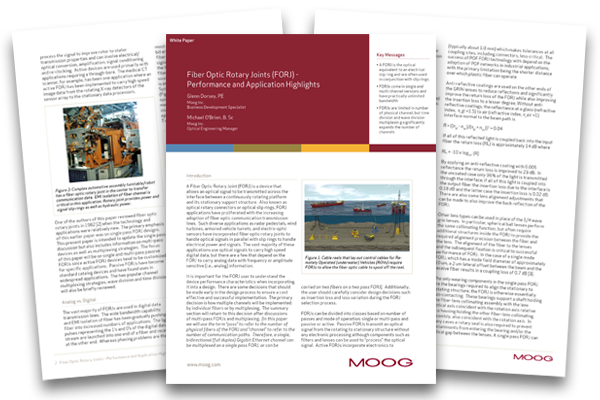Fiber Optic Rotary Joints (FORJ) - Performance and Application Highlights
March 29, 2019
March 29, 2019
Learn how to choose the right FORJ configurations for your application needs and achieve reliable optical data transfer.
A Fiber Optic Rotary Joint (FORJ) is a device that allows an optical signal to be transmitted across the interface between a continuously rotating platform and its stationary support structure. FORJ applications have escalated with the adoption of fiber optic communication transmission lines, offering practically unlimited bandwidth. While most FORJ applications use optical signals to carry high speed digital data, they are also able to carry analog data with frequency or amplitude sensitive (i.e., analog) information.

Applications
These devices can be used in a wide range of applications, such as:
How to Find Your FORJ
To ensure a cost-effective and successful implementation, it is important to understand the specific configurations you will need, early in the FORJ design and selection process. Read the key FORJ performance factors identified by Moog Business Development Specialist, Glenn Dorsey and our Optical Engineering Manager, Michael O’Brien.
FORJs are available in a multitude of configurations. However, the FORJ can be divided into classes based on number of passes (the number of physical fibers of the FORJ) and mode of operation: single or multi-pass and passive or active.
Single Pass vs. Multi-Pass
The primary decision when choosing your FORJ is how to implement multiple channels: by individual fibers or by multiplexing. From a mechanical perspective, multi-pass FORJs are generally larger and more complex than single-pass FORJs because of the mechanisms required to provide rotary alignment of multiple fibers.
Passive vs. Active FORJs
Often a more cost effective approach to adding optical passes is to use multiplexing, which adds effective channels of information without adding physical passes. Multiplexing, be it wavelength division multiplexing or time division multiplexing, takes advantage of the almost unlimited bandwidth of a single fiber by placing multiple signals on a single (or reduced number of) physical optical pass. The net effect of decreasing the number of physical passes is to reduce the size, cost, and weight of the FORJ without an additional performance decrement on the signal.
Key Takeways
It is important to carefully consider the best trade-off of multiplexing and physical passes when establishing both the mechanical and electrical architecture of the system. You will also want to carefully consider design decisions such as insertion loss and loss variation. Ultimately, however, the appropriate configuration will depend on your specific application and environmental needs along with the type of data transmission required.
Get more information about FORJ configuration options and their unique benefits across applications. Download your white paper, today.
Click here to see Moog's selection of FORJ products.
